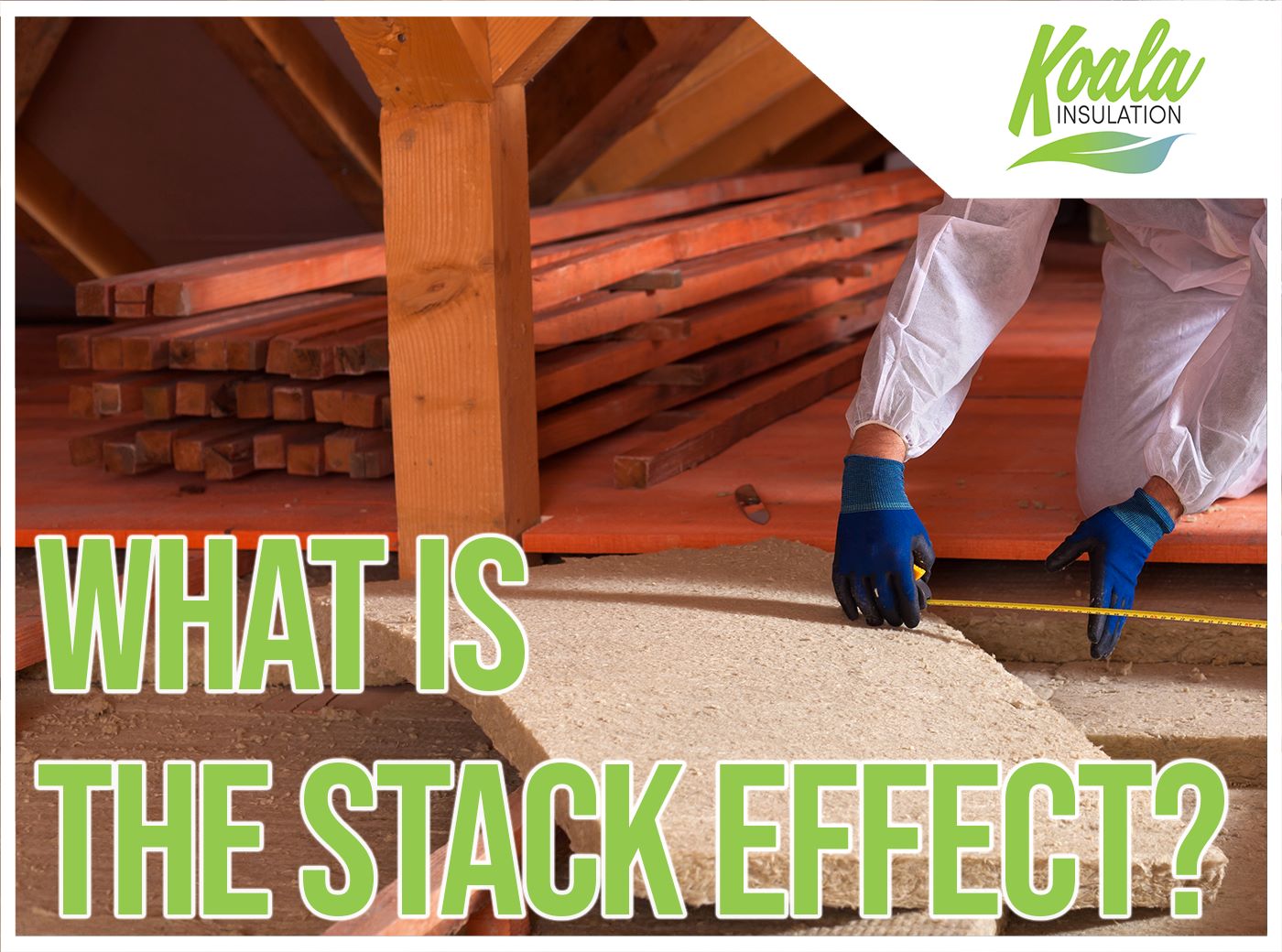Reduce The Stack Effect and Prevent Heat Losses in South Carolina

“Heat rises.” Who knew that a simple fact you learn in school could lead to discomfort and higher bills for your household?
The stack effect is simply defined as the upward movement of warm air in a building. This becomes a problem when the heat you’re trying to contain in the winter rises and escapes through any poorly insulated areas in the ceiling and through the roof. This phenomenon is what makes updated attic insulation so crucial for your home: it’s one of the first lines of defense against heat loss and the negative impact of the stack effect.
The primary benefit of insulation is the regulation of temperature in a building and assisting climate control by reducing heat transfer. The material installed throughout your home slows the rate at which heat moves through the structures of the building envelope.
While the simple idea that heat rises may seem obvious, many homeowners don’t connect this to the fact that it makes their home most susceptible to discomfort during the colder months of the year. As you attempt to heat up the house to a comfortable temperature, desired warmth escapes upward through areas that have old, damaged, or deteriorated insulation. Cold air then replaces the warmth, creating uncomfortable drafts and irregular temperatures.
When temperatures get drastic outside, this constant rotation will put more strain on the HVAC unit and increase your energy waste and costs. To avoid having your heater constantly kicking on and wasting money without making a dent in improving comfort, learn how to combat the stack effect in your home.
The Warning Signs Of The Stack Effect
The biggest mistake you can make when you're feeling too chilly in your home is to regularly run up the thermostat. Don't just blame the bad weather outside for extreme temperatures in the house. If you notice your home is beginning to struggle to maintain a climate-controlled environment, a reduction in indoor air quality, or a spike in your bills, it's likely the result of deteriorated insulation and air sealing.
Attic Inspection
Taking the opportunity to quickly check out the insulation in your attic is a fairly simple task that can give you a better idea of where the problem of discomfort is coming from. For most attics, the insulation is exposed enough to check for decompression and signs of infestation or moisture. Evaluating the current condition of your home’s material provides you with a better idea of what’s causing these issues.
Grab the following tools and safety gear before you head up to make for a safer inspection:
- A dust mask, gloves, and safety glasses
- A cap or hard hat for low ceiling and joist risks
- A flashlight or headlamp
- A tape measure
Cautious Insulation Inspection
Before stepping into the attic, take a look around for beams that you can walk on. In many unfinished attics, there aren’t floorboards or walkways that are strong enough to hold a person’s full weight. If you’re not careful, you risk falling through the ceiling. Be mindful of your foot placements.
Evaluating Insulation For The Stack Effect
Start by inspecting the insulation between ceiling joists and then check the material lining the floor. Take your tape measure and record the depth of the material to estimate the current R-value. If you have batt insulation installed in between ceiling joists, the R-value per inch of depth is typically printed on the material or covering.
Begin inspecting the insulation in between your ceiling joists, then check out the material lining the floor. Take the tape measurer and check the depth of the insulation to determine the current R-value. If you have batt insulation installed, the R-value per inch of depth is typically printed on the material or covering. These values will give you a closer look at whether the material has deflated to a problematic degree.
How Does R-Value Impact Your Environment?
The R-value of an insulation material is one of the most important factors to consider when you’re choosing what type to install. Resistance value is the numerical measurement of the insulation’s ability to reduce heat transfer. In most cases, a higher R-value per inch of depth means the material is more effective at reducing heat loss and problems like the stack effect.
Over time, this effectiveness will deteriorate. Some insulation types have the potential to last up to 15 years but damage from moisture, pests, and even general wear rapidly increases the rate of deterioration. This is what makes regularly scheduled evaluations so crucial, conducted by both yourself and local professionals.
R-Value Reminders
Calculating R-value is a fairly simple task but it's important to remember that each type of insulation material will have different R-values. For example, blown-in cellulose is a common installation choice for the floor of an attic while you might find fiberglass batts in between the joists on your ceiling. Blown-in cellulose has an average R-value of 3.4 per inch while fiberglass batts can range from 3.1 to 3.7 per inch. As you're checking the R-value, you may see some areas that may appear "deflated" or sunken, which indicates a reduced total R-value.
Just because a higher R-value generally means less needs to be installed, you shouldn’t think that these types of materials are automatically the best choice for your home. Rather than picking an insulation type based on the R-value, you should also consider the number of other benefits and applications for each insulation. Resistance value is only one, albeit important, feature to take into account; moisture resistance, fire safety, and even effectiveness in different climates are all significant variables to look into when it comes to keeping your home’s unique needs in mind.
Schedule A Free Evaluation With Local Experts
Attic insulation is a key place to have regularly evaluated in order to reduce issues like the stack effect. Durable material is effective at reducing heat loss during colder months but it also blocks out incoming heat during the summer, keeping it cool and more comfortable. Quality insulation and air sealing reduce up to 40% of regular heating and cooling costs when the material is properly installed with effective coverage.
The potential savings you'll earn depends on a number of factors because of your home's specialized needs. Your house is unique when compared to other buildings in your area, all the way from a state level to just down the street. Variables include climate zones, weather patterns, and even your regular household habits. That's why it's so important to talk to a local professional about what kind of insulation works best for your space while saving you the most in the long run.
To schedule a free evaluation and start improving your savings, contact your team of local professionals at Koala Insulation of Greenville today.
Find Your Location


Get a quote


